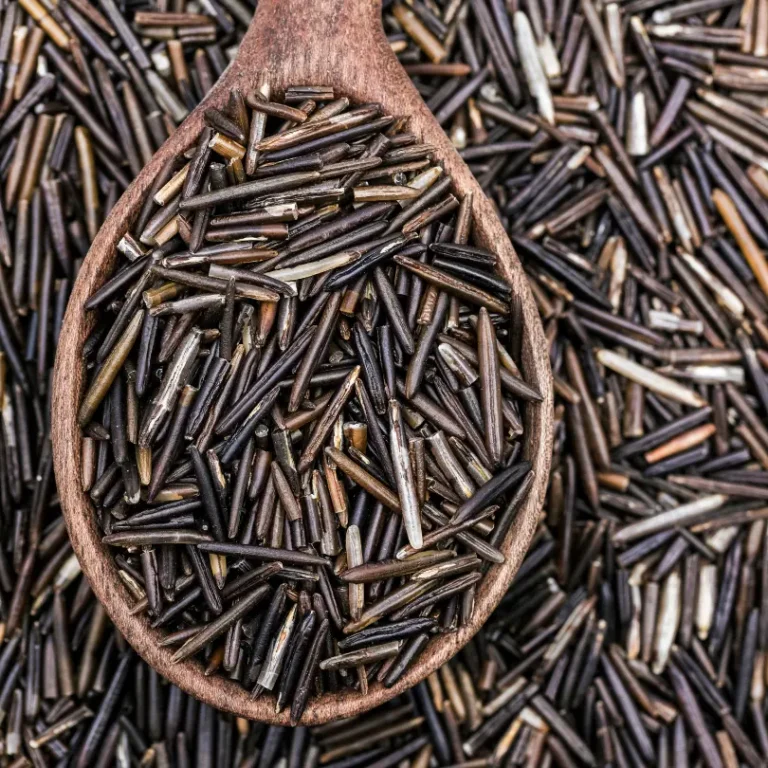Wild Rice: Everything You Should Know
Wild rice is one of the favorite grains eaten by a lot of people, but there’s so much to learn about this not-so-popular grain. Recently, this unique grain has gained huge popularity in households across the globe and for all the right reasons. This blog has covered everything you’d like to learn about wild rice, including what it is, nutrition facts, varieties and more.

What is Wild Rice?
Here are some of the prominent varieties of Rice:
Contrary to its name, this rice is not exactly rice but instead the seed of aquatic grasses. This unique grain is native to North America, majorly harvested from freshwater marshes and lakeshores. It grows naturally in shallow freshwater along the shores of lakes and streams. Moreover, it is comparatively longer with an intense nutty and earthy flavor, and the hull is thicker and stiffer.
Wild rice was originally grown and cultivated by Native Americans, who used it as a primary ingredient in their meals for hundreds of years. In fact, it’s only considered rice because it appears and cooks like other kinds of rice. Furthermore, home cooks and chefs have started incorporating this grain into their everyday meals, using it as a side dish, stuffing for meats and veggies and even in soup.
What Does Wild Rice Taste Like?
When it comes to the flavor of wild rice, it has an aromatic toasted nuttiness. This grain graces your kitchen the moment you bring a freshly cooked bowl of rice, making any meal wholesome and satisfying. As long as the rice is not overcooked, it has a soft, chewy texture, adding a wonderful base to soups and casserole dishes. However, its earthy flavor is considered slightly more intense than white and brown rice, but not overpowering.
Nutrition Facts
About 3.5 ounces (100 gram) serving of perfectly cooked rice offers:
Calories: 101
Carbs: 21 grams
Protein: 4 grams
Fiber: 2 grams
Vitamin B6: 7% of the Daily Value (DV)
Folate: 6% of the DV
Magnesium: 8% of the DV
Phosphorus: 8% of the DV
Zinc: 9% of the DV
Copper: 6% of the DV
Manganese: 14% of the DV
As wild rice is known to have slightly fewer calories than brown or white rice, 3.5 ounces (1oo grams) of cooked rice will give 101 calories, while brown rice gives 112 and white rice gives 130 calories. Besides, it has tiny amounts of potassium, iron and selenium. The low calorie and high nutritional value make this rice a fully nutritious food. It’s an excellent source of minerals and a perfect plant-based protein source.
Species of Wild Rice
There are four major species of this rice variety; three native to North America and one native to Asia:
- Wild Rice (Zizania aquatica) – It is basically an annual plant that grows beside the Saint Lawrence River in Florida, the Gulf and Atlantic coasts of the US.
- Northern wild rice (Zizania palustris) – This plant is native to the North American Great Lakes region, Wisconsin, Minnesota and Idaho. It is also grown in some areas throughout Canada.
- Texas Wild Rice (Zizania. texana) – It is a perennial plant only available in small areas besides the San Marcos River in Texas. However, Texas wild rice is on the verge of being extinct because of severe pollution in the area.
Manchurian wild rice (Zizania latifolia) – It is another perennial plant originating from China. However, it has almost disappeared from its native growing. Know More..
Wild Rice Varieties
Cultivated Wild Rice
This rice variety is typically farmed rice. It is grown within special conditions in “grow puddles,” or man-made paddies, to recreate its native growing conditions. However, the majority of cultivated wild rice is grown in Minnesota, and California is not really organic.
This rice is basically dark brown or black in color. It is dense and takes a lot of time to cook compared to ‘true’ this rice. That’s why most commercially harvested rice is fermented or cured to add a more uniform dark brown or black color. Relatively affordable, almost all the varieties of wild rice available at supermarkets are considered cultivated this rice.
True Wild-Grown Wild Rice
This rice variety is majorly grown in the wild and handpicked from lakes and rivers in Canada and Minnesota. As it is not easily available, this rice is on the expensive side, averaging about 9$ per pound (while cultivated wild rice normally costs 3$ to 5$ per pound). Moreover, the earthy flavor of this rice is adequately more intense, smoky flavor with a tender texture.
Benefits of Wild Rice
Here are some key benefits:
- Heart Health: Based on the latest research, this rice variety has some powerful antioxidant and lipid-reducing properties. Moreover, it has a high level of dietary fiber, which is highly essential for maintaining low cholesterol.
- Diabetes: It is an excellent source of Alpha Lipoic Acid (ALA). According to expert research, it is evident that ALA is beneficial for individuals with type 2 diabetes. In fact, this rice may improve the body’s ability to create insulin and reduce the symptoms of diabetic nerve damage.
Weight Loss: Similar to other grains, wild rice is highly effective in reducing hunger and binge eating habits. Although it is relatively low in calories, because of its high fiber content, it’s quite fulfilling. Besides, this rice is a great option for people who want to lose or maintain weight.
How to Prepare Wild Rice?
When you want to cook wild rice, it’s essential to take more water than what is required for white rice. It also needs more time; about an hour for one cup of uncooked grains. Although if you soak some of this rice overnight, it can decrease the cooking duration by about 50%.
Properly rinse the rice before you cook it. Water-to-rice ratios differ, but you should normally add three to four cups of water for each cup of rice. Moreover, you can also switch to stock for plain water to cook this rice for more flavor.
Boil the water and rice in a pan and simmer until the rice is soft and tender. It should not be dense or crunchy at all. If you notice the grains start to split along the sides, it’s properly cooked.
Furthermore, there are numerous tasty recipes that are made from this rice. It is quite a popular ingredient used to cook pulao and stuffing in meat. This rice variety goes well with pemmican, a famous traditional indigenous food normally cooked with dried meat, dried berries and animal fat.
Buying and Storing
Wild rice is available in the rice section in most supermarkets and grocery stores. Most cultivated varieties are easier to locate compared to wild-grown. In fact, it is easy to spot the difference between the two by comparing their price, color and size. Typically, wild-grown rice is brown or dark brown in color and more costly (about 9$ per pound). On the contrary, cultivated this rice is dark brown to black in color and less expensive (about 3$ to 5$ per pound).
When you store rice in an airtight container and in a cool dry place, the shelf-life increases for years. After you cook the rice, transfer it to an airtight container and put it in the refrigerator, it lasts up to one week only. For convenience, you can also freeze cooked rice by transferring it to an airtight container or freezer-safe zip-lock bag and keeping it in the freezer for at least 4 to 6 months.
Conclusion
All in all, wild rice is a unique kind of grain that’s highly chewy yet delicious. It has more protein than regular rice, numerous essential nutrients, and a good amount of antioxidants. What’s more interesting is that consuming this rice daily may improve heart health and reduce your risk of type 2 diabetes. Thus, if you want to try this rice, go ahead and grab a bag from your nearest supermarket and cook your favorite rice recipe.




Pingback: Why are Diabetic People Advised Not to Eat Rice? - Vi Exports